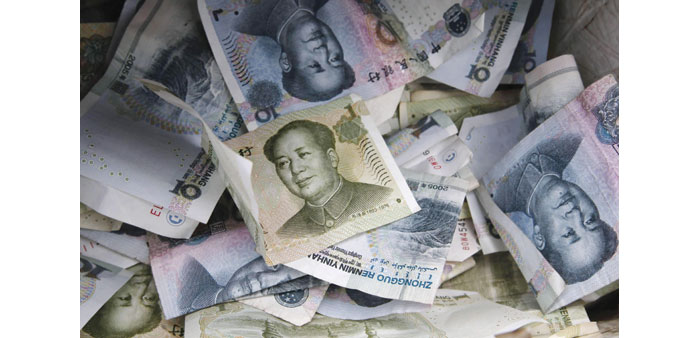The IMF’s executive board yesterday agreed to add the yuan to its Special Drawing Rights basket alongside thedollar, euro, pound sterling and yen, in a move earlier backed by IMF chief Christine Lagarde and in-house experts.
Reuters
Washington
The International Monetary Fund yesterday admitted China’s yuan into its benchmark currency basket in a victory for Beijing’s campaign for recognition as a global economic power.
The IMF’s executive board agreed to add the yuan, also known as the renminbi, to its Special Drawing Rights (SDR) basket alongside the dollar, euro, pound sterling and yen, in a move earlier backed by IMF chief Christine Lagarde and in-house experts.
To meet the IMF’s criteria, Beijing has undertaken a flurry of reforms in recent months, including better access for foreigners to Chinese currency markets, more frequent debt issuance and expanded yuan trading hours.
The currency will have a 10.92% share, in line with expectations, after a review of the weightings formula for the SDR, which determines which currencies countries can receive as part of IMF loans.
The yuan’s inclusion is a largely symbolic move, with few immediate implications for financial markets. But it is the first time an additional currency has been added to the SDR basket and the biggest change in its composition in 35 years.
Last set in 2010, the basket is currently 41.9% dollar, 37.4% euro, 11.3% sterling and 9.4% yen. The yuan would not join until October 2016, allowing reserve managers time to prepare.
Under the new weightings, the euro’s share will drop to 30.93%. Sterling and yen will also have lower weights while the dollar remains about the same.
To be included in the SDR basket, the yuan had to meet the criteria to be “freely usable,” or widely used to make international payments and widely traded in foreign exchange markets – a yardstick it missed at the last review in 2010.
The addition is likely to fuel demand for China’s currency and for renminbi-denominated assets as central banks and foreign fund managers adjust their portfolios to reflect the yuan’s new status.
Currency analysts estimate the IMF seal of approval could fuel demand worth more than $500bn in coming years and take the yuan’s share of global reserve holdings to around 5%, overtaking the Canadian and Australian dollars.
By acknowledging the yuan as a major global currency alongside the dollar, euro, yen, and pound, as is widely expected, IMF members will endorse the efforts of China’s economic reformers and by doing so hope that will spur fresh change in China.



